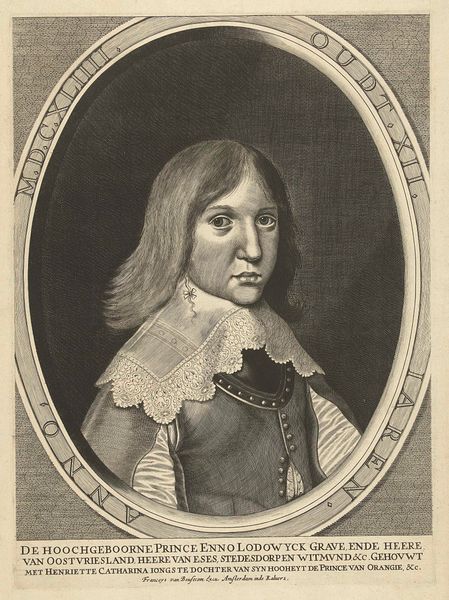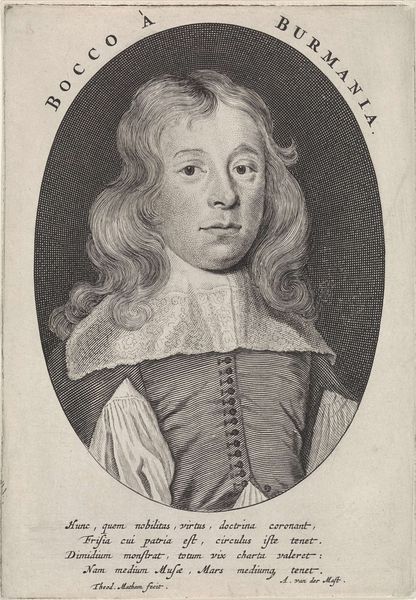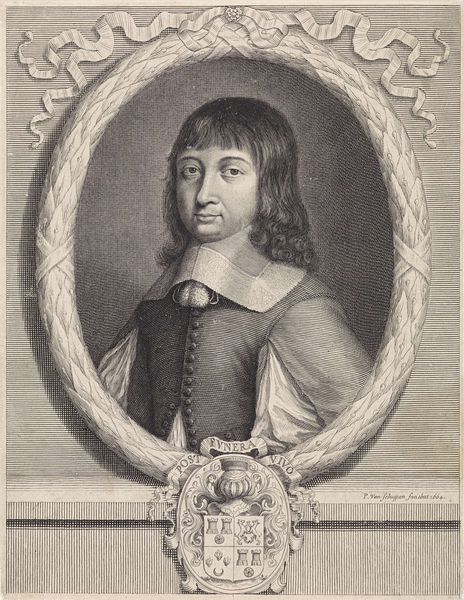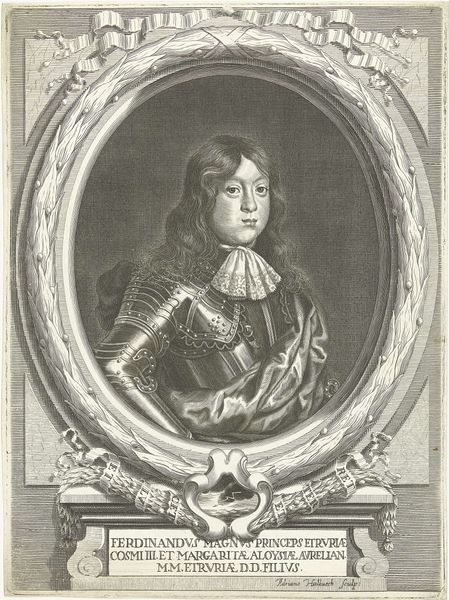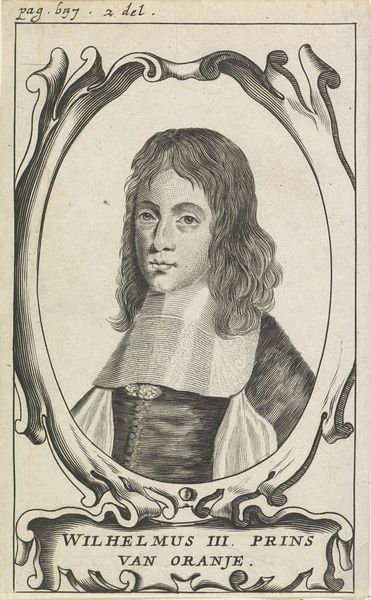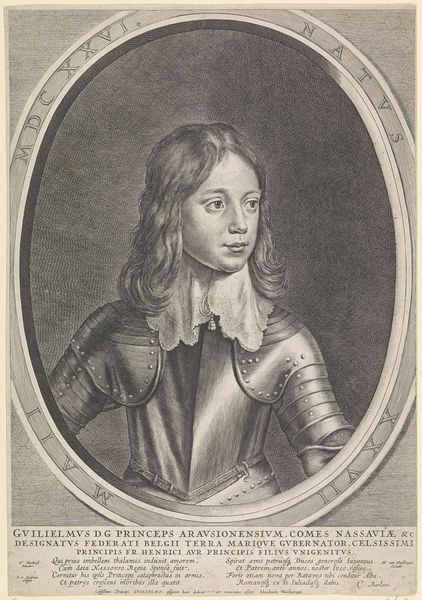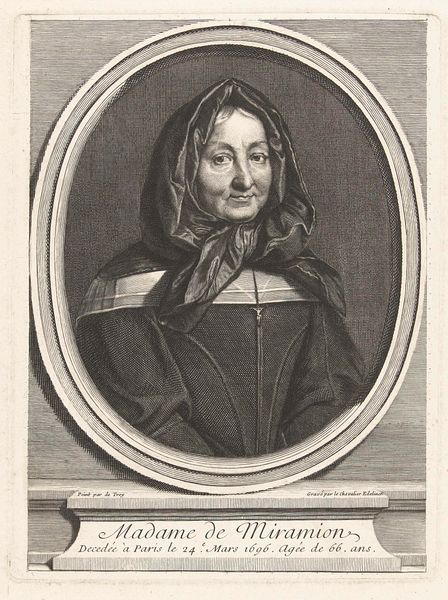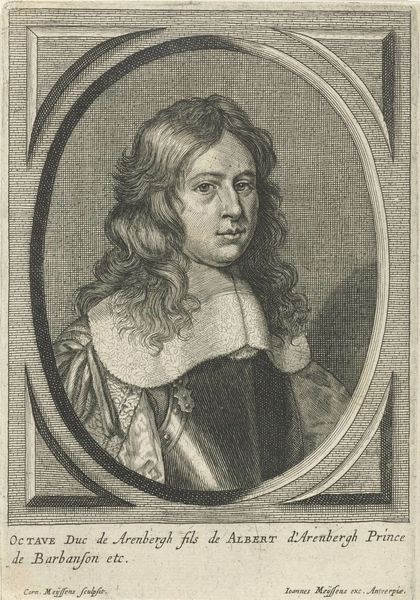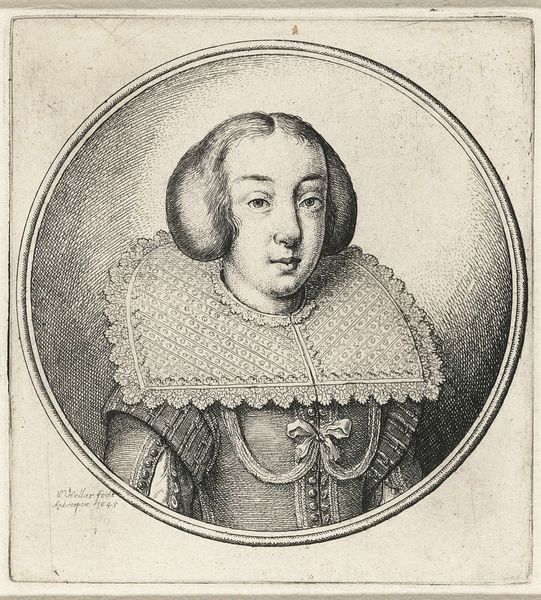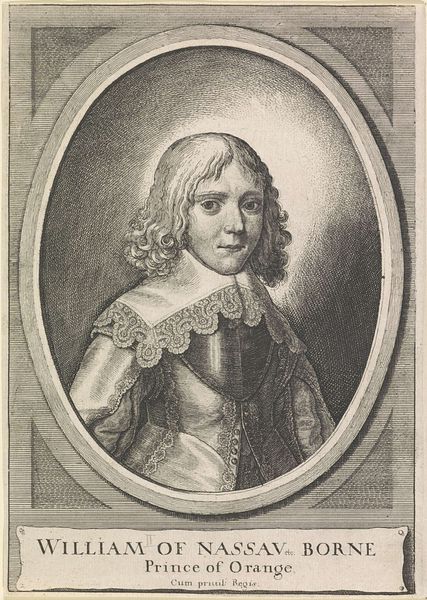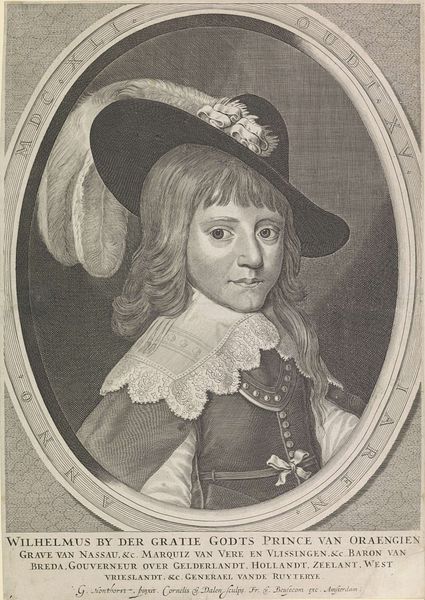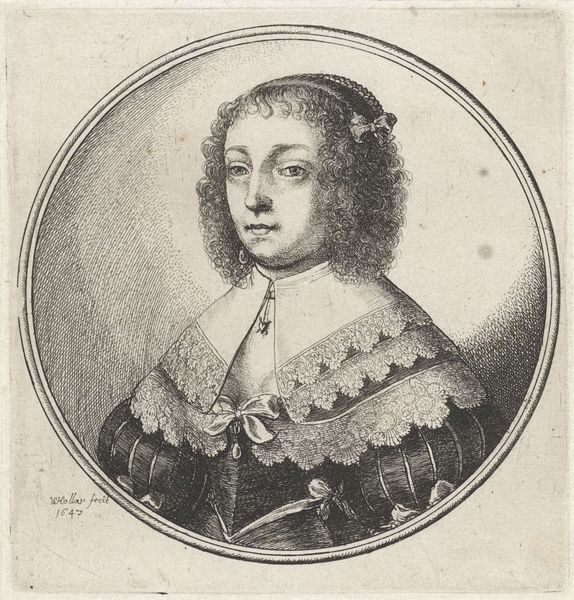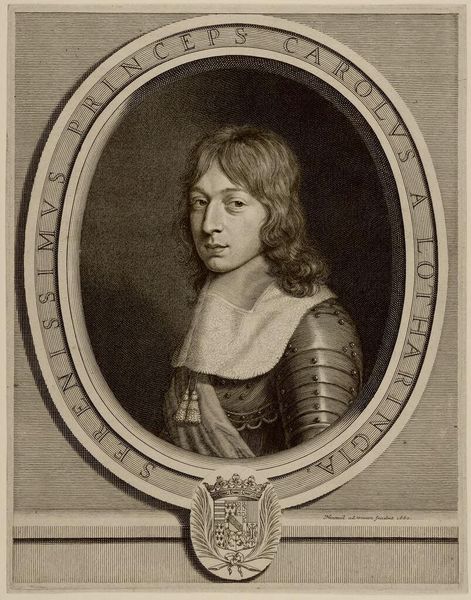
drawing, engraving
#
portrait
#
drawing
#
baroque
#
charcoal drawing
#
pencil drawing
#
framed image
#
portrait drawing
#
history-painting
#
engraving
Dimensions: height 394 mm, width 297 mm
Copyright: Rijks Museum: Open Domain
Curator: This engraving presents a portrait of Wolfert van Brederode, crafted by Theodor Matham sometime between 1649 and 1676. Editor: He looks so young, doesn't he? There’s a kind of dreamy vulnerability to the face that almost clashes with the armor. It feels staged, almost like a costume drama. Curator: The Brederodes were indeed a prominent family; portraying Wolfert in armor underscores his lineage and future role, even at a young age. Images such as these were integral in shaping perceptions and expectations. Editor: True, I suppose the armor speaks of duty, and of expectations far grander than playing in a garden, say. Do you think he chose this image or was he encouraged to appear "warrior-like?" Curator: It's highly likely that this representation was carefully constructed, bearing in mind that Matham made the engraving after a design by Jan van de Velde. A large portion of these engravings were made as a deliberate statement from his inner circles. Editor: It works visually though. The stark contrast of the ornate, soft lace collar against the hard metal plates is pretty striking. And the details! You can almost feel the weight of it all. Curator: Precisely. The baroque style evident in Matham's work here uses intricate detailing to convey both status and personality—an interesting play, given the constraints of a more standardized mode of depiction. Engravings offered accessible likeness and allowed such images to circulate widely and, of course, perpetuate political agendas and familial pride. Editor: Looking at it now, you can sense that play between reality and performance, can't you? What we see is probably more about creating an image than capturing an honest likeness, and yet that performance itself tells a kind of truth. Curator: Exactly. Understanding how art operates within societal power dynamics offers us such critical insights into not just the aesthetics but the ideologies of the past. Editor: This one does leave you thinking. It makes me consider who we choose to portray ourselves and how much of it is what people expect from us. Curator: Yes. It really highlights the way the creation of the past involves just as much editing and shaping as art-making itself.
Comments
No comments
Be the first to comment and join the conversation on the ultimate creative platform.
